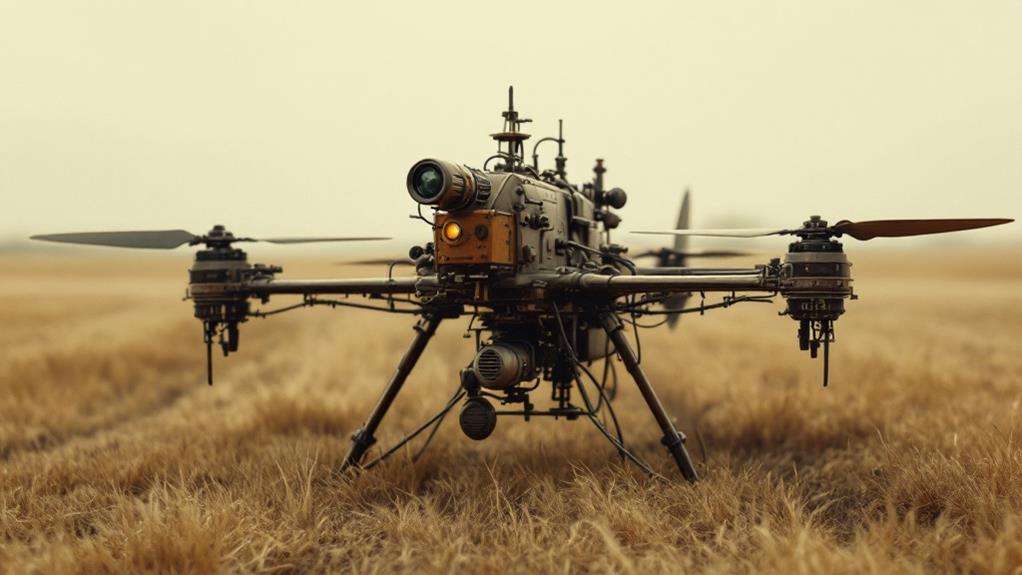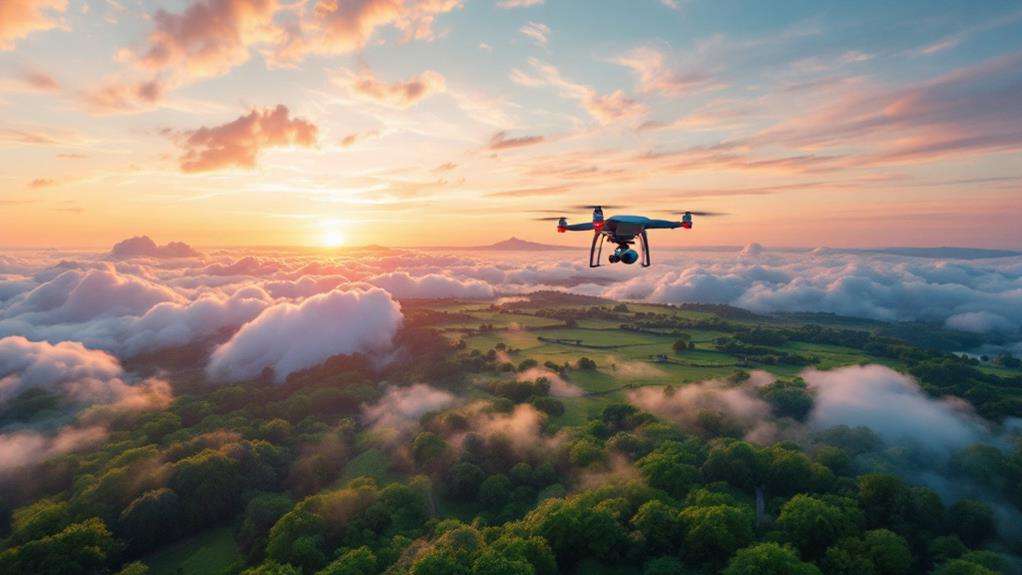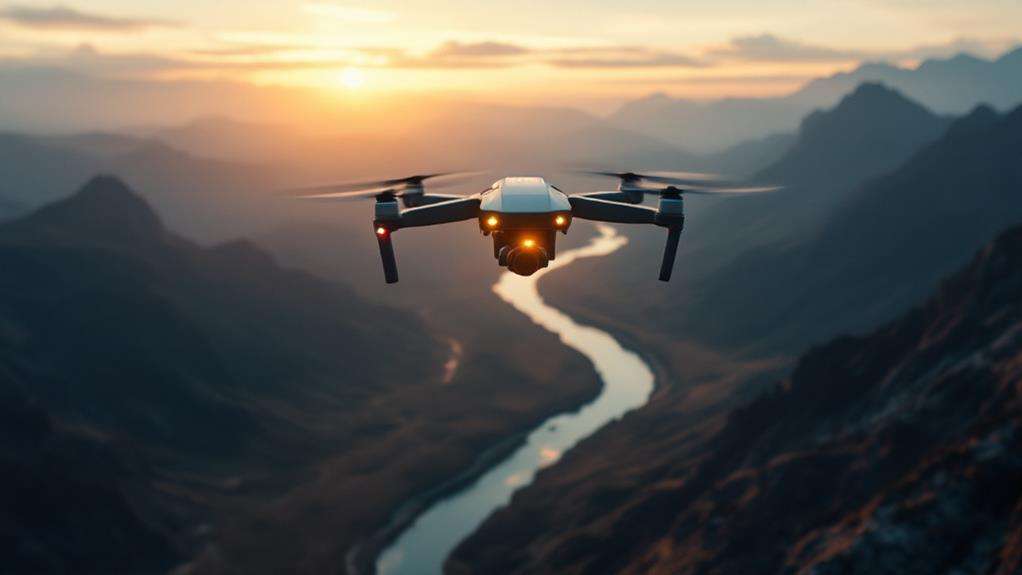What Is the Most Common Use of Unmanned Aircraft Systems?
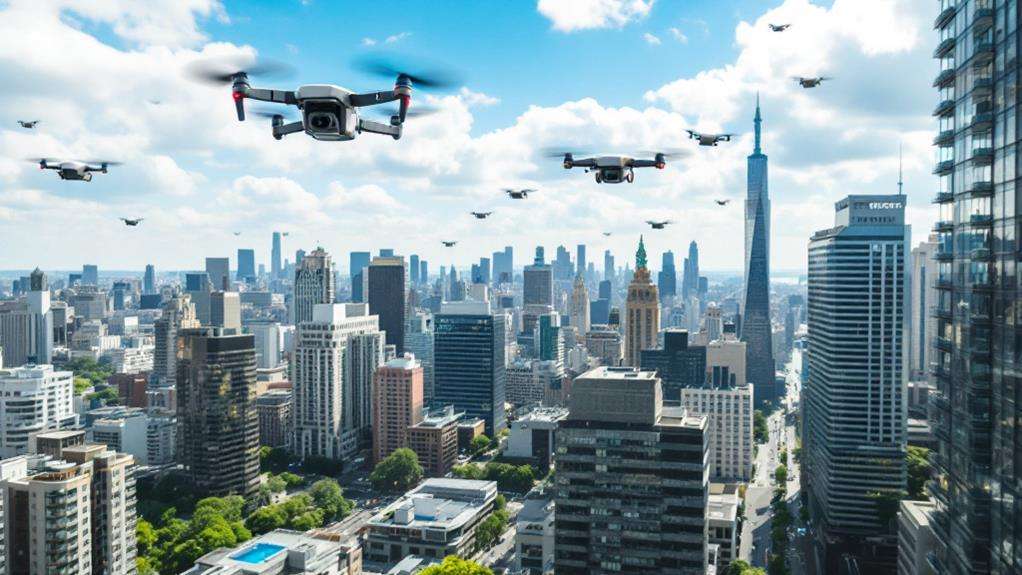
When you think about the most common use of unmanned aircraft systems (UAS), precision agriculture stands out. Around 80% of UAS applications are dedicated to improving crop management. These systems enable efficient monitoring of crop health, soil, and irrigation. They provide real-time data that helps you make informed decisions quickly. You'll benefit from targeted pesticide spraying, reduced waste, and better crop yields. With high-resolution aerial imagery, you can address threats like diseases or pest infestations effectively. The impact on sustainability is notable, with optimized resource use and reduced environmental footprint. There's so much more to discover about their transformative role.
Key Takeaways
- Precision agriculture is the most common use of UAS, focusing on efficient crop monitoring and management.
- UAS technology is essential for real-time data collection, optimizing resource management in agriculture.
- UAS applications in precision agriculture enhance sustainability by minimizing waste and environmental impact.
- Improved crop monitoring through UAS boosts agricultural productivity and provides timely alerts for pest threats.
- UAS advancements in data acquisition and automation streamline agricultural processes, reducing labor costs.
Precision Agriculture Applications
In today's agriculture, unmanned aircraft systems (UAS) have revolutionized how farmers manage their crops. As a farmer, you're likely aware that precision agriculture is the leading way UAS is transforming the industry. By using UAS, you can efficiently perform crop monitoring, which means keeping a close eye on your crop health, soil conditions, and irrigation needs. This technology ensures you can manage your resources more effectively, leading to improved yields and smarter resource management. Imagine reducing manpower and saving time by getting real-time data that informs your decision-making processes. With UAS, you can make timely interventions that could make a significant difference in your overall crop production. One key application is pesticide spraying. You can use UAS to target specific areas of your fields, applying pesticides precisely where needed, minimizing waste, and reducing chemical exposure. Furthermore, UAS technology supports robotic scouting, giving you detailed assessments of specialty crops. This level of precision farming isn't just a trend; it's becoming a staple in modern agriculture. By embracing these advancements, you're paving the way for a more efficient and productive farming future.
Enhancements in Crop Monitoring
You're about to witness a game-changer in how you monitor your crops, thanks to advancements in UAS technology. This cutting-edge technology is revolutionizing precision agriculture by enhancing crop monitoring methods like never before. With onboard sensors, including cameras and multispectral imaging, UAS technology delivers detailed insights into your crops' health and growth patterns. It lets you swiftly cover vast agricultural areas, enabling you to pinpoint issues such as pests or diseases with remarkable efficiency. Real-time data collection allows immediate adjustments to farming practices, maintaining crop health and optimizing resource use. Imagine being able to assess your entire field in a fraction of the time it would take using traditional methods. UAS technology doesn't just save you time; it reduces manpower, which translates to significant cost savings. The insights gained from these systems mean you can act quickly, addressing problems before they escalate, ultimately boosting productivity.
Moreover, the future looks even brighter with advancements like robotic scouting. These innovations are set to redefine specialty crop management, providing you with even more precise tools to optimize your agricultural practices. With UAS technology at your disposal, you're not just monitoring crops; you're transforming how agriculture operates, ensuring sustainability and efficiency in managing your fields.
Resource Management and Allocation

Many farmers today find themselves harnessing the power of Unmanned Aircraft Systems (UAS) for smarter resource management and allocation. By utilizing UAS equipped with advanced sensors, you're able to monitor vast agricultural areas efficiently. This helps you optimize water usage and minimize fertilizer application, ultimately enhancing resource allocation. In fact, 80% of UAS applications target precision agriculture, a testament to its importance in resource management.
UAS technology also extends beyond agriculture. The energy sector uses it to monitor oil and gas pipelines, enabling timely inspections that prevent costly repairs and reduce environmental risks. In environmental monitoring, UAS aids in tasks like landslide research and wildlife conservation, providing accurate data for effective resource management.
| Sector | UAS Application | Benefit |
|---|---|---|
| Agriculture | Crop health monitoring | Optimal water and fertilizer use |
| Energy | Pipeline inspections | Reduced maintenance costs, safety |
| Environmental | Ecosystem monitoring | Accurate data for conservation |
Moreover, integrating UAS with Geographic Information Systems (GIS) enhances spatial analysis capabilities. This integration improves decision-making in resource allocation, whether you're involved in urban planning or environmental management. By leveraging UAS, you're not just monitoring resources; you're actively improving how they're managed and allocated.
Improving Agricultural Yields
Unmanned Aircraft Systems (UAS) are transforming the agricultural landscape by dramatically improving yields. By embracing precision agriculture, you're able to monitor crops and livestock with unprecedented efficiency. Imagine having the capability to receive timely alerts about potential threats like disease or pest infestations. UAS make this possible, empowering you to take swift action and protect your investments.
With UAS, precision tasks such as pesticide spraying and crop mapping become a breeze. This technology significantly reduces the manpower and time traditionally required, allowing you to focus on other critical aspects of farming. High-resolution aerial imagery collected by UAS provides detailed insights into crop health, enabling you to make data-driven decisions that optimize yields.
The integration of UAS in agriculture means enhanced operational efficiency. You can analyze the health of your crops with precision and carry out strategic interventions to boost agricultural productivity. By leveraging this technology, you're not just improving yields; you're also setting the stage for smarter farming practices. Overall, UAS offer you a cutting-edge toolset for improving agricultural productivity, ensuring that your farm operates at peak performance and thrives in an increasingly competitive industry.
Sustainability in Farming Practices

UAS technology is revolutionizing sustainability in farming by allowing you to embrace precision agriculture, which cuts down on waste and boosts crop yields. By efficiently monitoring crop health and soil conditions, UAS provides you with real-time data to optimize irrigation. This means you can reduce water usage without sacrificing crop yield, aligning with sustainable farming practices.
When it comes to pesticide application, UAS offers a precise solution. You can spray chemicals accurately, minimizing environmental impact. This not only enhances the safety of your workers but also protects surrounding ecosystems. By reducing chemical runoff, you're contributing to a healthier environment while maintaining your farm's productivity.
UAS also plays a crucial role in managing livestock. With aerial surveys, you can gather data to optimize grazing patterns. This helps you use your land more effectively and prevents overgrazing, which can damage soil health. By keeping your land productive and sustainable, you're ensuring long-term agricultural success.
Given that 80% of future UAS applications are expected to focus on agriculture, integrating these technologies into your practices is essential. UAS supports sustainable farming by enhancing efficiency, reducing waste, and improving crop yield, ultimately lowering the environmental impact.
Technological Advancements in UAS
With recent advancements pushing the boundaries, unmanned aircraft systems (UAS) are transforming various industries through improved technology. You'll find that UAS operations have become more efficient and versatile, thanks to significant technological advancements. Enhanced flight duration and payload capacity allow these systems to tackle tasks that were once unimaginable. From critical infrastructure inspections to emergency response scenarios, the increased maneuverability of UAS makes them indispensable tools.
One of the most impressive strides is in data acquisition. By integrating advanced sensors like LiDAR and high-resolution cameras, UAS now perform tasks that were once the domain of manned aircraft. This capability is not only more cost-effective but also safer, especially when accessing hard-to-reach areas. The developments don't stop there; improvements in communication and command/control systems are heightening operational reliability and safety, even in complex missions.
As UAS technology continues to evolve, the possibilities expand. Imagine autonomous delivery services or precision agriculture monitoring—they're not just futuristic ideas anymore. These innovations demonstrate how technological advancements in UAS are opening new doors and driving change across various sectors, making them a critical component of modern operations.
Future Trends in Agriculture
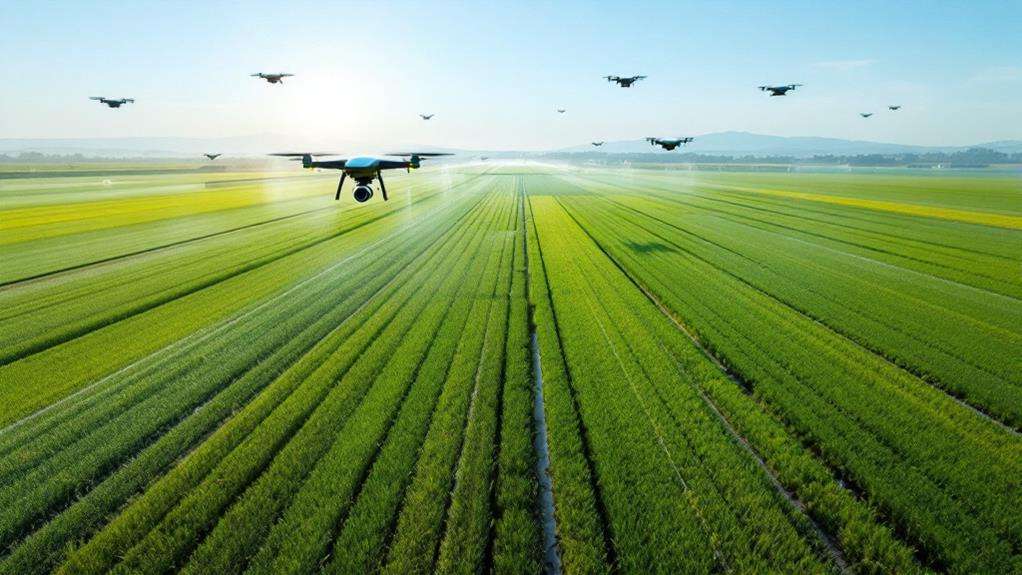
Drones are revolutionizing agriculture, making it more efficient and precise than ever before. As UAS technology continues to advance, you'll find that precision agriculture is taking center stage, with about 80% of UAS applications focusing on this sector. These systems enhance crop monitoring by providing real-time data collection on plant health. This data allows you to make informed decisions on irrigation, fertilization, and pest control, optimizing your farming practices.
The table below highlights key benefits of UAS in agriculture:
| Benefit | Description |
|---|---|
| Cost-Effectiveness | UAS technology reduces labor costs and time, allowing you to cover larger areas efficiently. |
| Enhanced Monitoring | Real-time data on plant health enables precise interventions, improving resource management. |
| Autonomous Systems | Future UAS advancements will automate farming tasks, reducing your reliance on manual labor. |
Robotic scouting with UAS is making strides in specialty crop management, where accurate data collection and analysis are crucial. Imagine autonomous systems performing tasks without human intervention—it's not just a dream, it's the future of farming. By embracing these trends, you'll be at the forefront of agricultural innovation, ensuring your farm's success and sustainability in the coming years.


